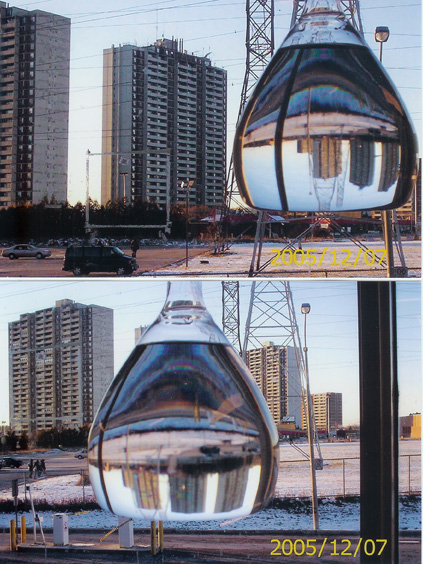Inverted Image - Converted Lens
 |
Have you ever wondered that a flask filled with water could turn an image upside down? Well, it can. To take this picture, we cleaned the flask and filled it up with clean water. Next we found a good site to take this photo. We had to make sure that no bubbles are formed inside the flask for a clear image. The shape of the flask can resemble a converging lens. The flask was thicker in the middle and thinner towards the edges. Since those buildings were beyond the length of 2F (twice the focus), the image is inverted and reduced in size. The light is refracted twice, once when it enters the water and another time when it leaves the water. This flask will have the properties of a converging lens. The light that enters through the top part of the flask is refracted and leaves the flask from the bottom. Moreover, the light that enters from the bottom part of the flask leaves the flask from the top. Similarly light that enters from the right side leaves from the left side and light that enters from the left side leaves from the right side. Light that travels along the principal axis does not refract at all. One of the best applications of a converging lens is a camera. The image captured on the film of the camera is inverted and reduced in size. Our eye is another great example. The image formed in the retainer is also inverted and reduced in size.
Satyam Merja and Sarthak Sharma
Emery Collegiate Institute, Toronto, Ontario
1st Prize ( HS Class Category )
Questions or comments regarding these pages may be sent to / Les questions ou commentaires concernant ces pages peuvent être envoyées à
cap@uottawa.ca